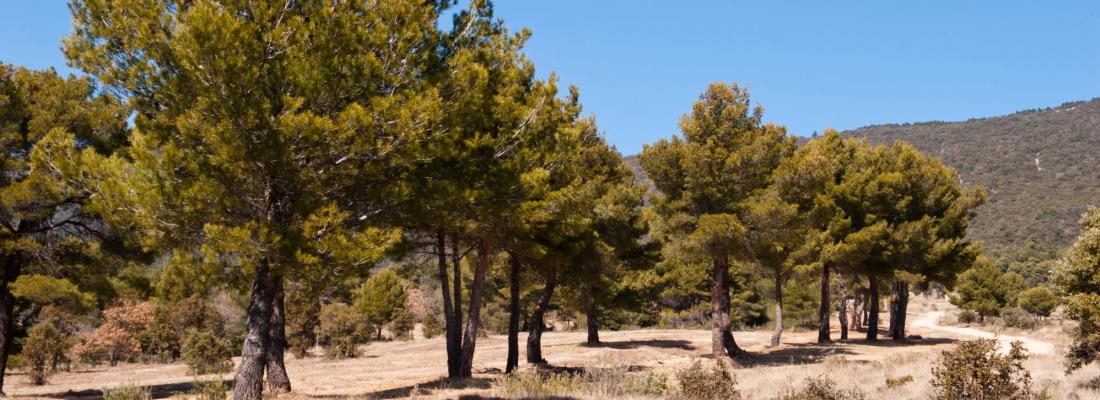Biodiversity Reading time 2 min
Largest database on Mediterranean trees available through open access
PRESS RELEASE - An international network of 30 scientists, coordinated by INRAE and the European Forest Institute (EFI) and involving Aix-Marseille Université, the University of Montpellier, the French National Forest Office and the French National Museum of Natural History, drew up an inventory of 496 species and 147 subspecies of trees in the Mediterranean region. These data, which are available through open access and include details on species extinction risk and genetic diversity, are vital for forest conservation and restoration. The findings were published in Current Forestry Reports.
Published on 18 August 2025

One of the biggest challenges facing forests today is climate change adaptation and mitigation. However, Mediterranean trees are rarely included in forest conservation and sustainable management policies.
Given the lack of knowledge on trees from the Mediterranean region, a group of 30 researchers based in North Africa, the Middle East and southern Europe gathered and analysed a large data set on the presence or absence of trees across the entire geographical zone under Mediterranean climate in North Africa, Western Asia and Europe. The group was coordinated by INRAE and the European Forest Institute (EFI) and involved Aix-Marseille Université, the University of Montpellier, the French National Forest Office (ONF) and the French National Museum of Natural History (MNHN). They identified 496 species and 147 subspecies from 111 genera, including 48 species and 8 subspecies that had previously been considered shrubs but which naturally grow into trees in the Mediterranean.
The inventory covered 39 botanical territories, defined as distinct Mediterranean areas within a country (for example, France has two such botanical territories: southern continental France and Corsica). The scientists showed that the number of endemic tree species (i.e. those that are specific to a botanical territory) varied significantly from one territory to another. For instance, Spain has 150 endemic species, while continental France has 139, Türkiye 277, Algeria 57 and Sicily 102. Data on extinction risk were lacking from the IUCN Red List[1] for nearly half the inventoried species. While no geographical trends were identified, species richness was positively correlated with the botanical territory area and habitat heterogeneity. Genetic diversity was documented for only a third of the inventoried species (mainly those of economic importance). Of the 169 species for which a genetic diversity study existed, 43% were known for at least one food- or timber-related use.
These findings and the gaps they highlight underscore the importance of stronger collaboration, as recommended in the Mediterranean Forest Research Agenda 2030 to make tree conservation efforts in Mediterranean forests more effective. The data are available through open access on the Recherche Data Gouv platform. They can be used by scientists, forest managers and other stakeholders to support national and regional conservation policies for forest genetic resources, ecological restoration and sustainable forest management.
Référence
Fady B., Farsakoglou AM., Caron M. et al. (2025). Native trees of the Mediterranean region: distribution, diversity and conservation challenges. Current Forestry Reports, DOI : 10.1007/s40725-025-00252-w
This study was funded by INRAE and the European Forest Institute’s Mediterranean Facility (EFIMED).
[1] According to the International Union for Conservation of Nature, “the IUCN Red List is a critical indicator of the health of the world’s biodiversity”. Thanks to this list, we now know that one in four mammal species, one in seven birds, more than one in three amphibians and more than a third of pine species are at risk of worldwide extinction.
